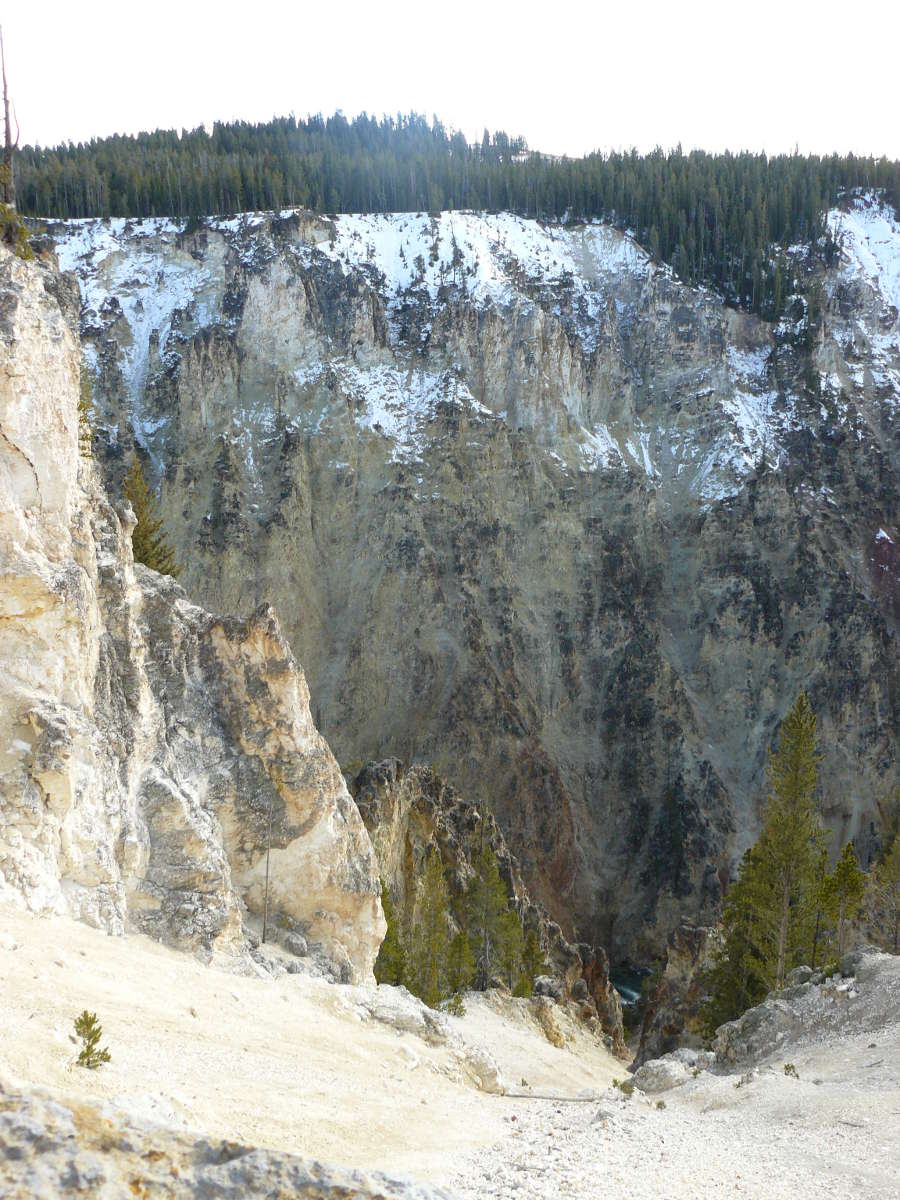 Location Taken: Yellowstone National Park, Wyoming
Location Taken: Yellowstone National Park, Wyoming
Time Taken: October 2012
One of the toughest things to capture in photography, or really any 2D artwork, is the sense of scale.
Now, tiny thins usually do pretty well. A few focus tricks go a long way for them. But for large objects, well, let’s just say you can have an entire mountain inside one focal range. Easily.
Take this photo, for instance. You look at it and see a large rock wall, with some trees on top and some snow. Not much to give you an instant sense of how big this object is, as trees come in a large variety of sizes. If you look closer at the trees AND recognize the basic species, you can start piecing together just how large this rock wall is.
There’s also the foreground rocks. They’re a brighter color, which makes them pretty obvious that they’re not connected to the far rock wall. And other clues such as the scattering of trees on this side of the canyon help give the sense that this part is close to the viewer. Although, those trees actually help diminish the apparent size of the rock wall on the far side, since the close trees are growing in a very rough spot (literally on the side of a cliff) and are stunted and shrunken compared to the pines that tower above all else on the tops of the cliffs.
It doesn’t help that the rock has the odd quality of having dark patterns that look very similar both in the smaller scale of the close rocks and the larger scale of the far rocks. Usually rocks have noticeably different appearances when looking at a boulder versus a mountain face, but not here.
And if you look very closely, following the point of the V-shaped gully right in front of the viewer all the way down, there is a river. It’s just a dash of blue and white, but it’s another clue as to scale. And again, it’s one that is tough to judge, as it could be a tiny stream or a monstrous rapid.
So how big is this canyon?
Well, let’s just say they call it the Grand Canyon of the Yellowstone for a reason. That river is at least 800 feet down, at a very steep angle, and is in the ballpark of 50 feet wide. That far cliff face is a quarter mile away. It is, in other words massive.
And when you’re actually there, that scale just asserts itself every time you look at it. You look down and start calculating just how much it would hurt to fall down there, followed by a small step further away from the cliff edge. This is a quintessential giant gouge in the surface of the Earth.
That’s why I took this photo, actually. I was standing next to the guardrail looking downwards, my mind still boggling at the scale, when I noticed I could actually see the river from this angle. And between the scale and the distant river, I figured it was worth the moment of time and the 1.8 MB on my memory card to grab a photo.
Now mind you, when you’re actually at this spot looking down, it’s not the far cliff wall that catches the eye most. Nor is it the river, the trees, or even the rocks on this side.
It’s that small trickle of darker sand marking the lowpoint of the gully. And the ever-present thought that if you tripped over the rock fence and started sliding down the side of the cliff, it would be a long time before you hit anything.
Well, perhaps not too long. It is actually rather steep so you would gain a lot of speed. Which admittedly doesn’t make the landing any easier…
